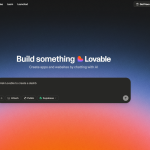Vibecoding: The Art of Programming by Feel
In the rapidly evolving landscape of software development, a new philosophy has emerged that challenges traditional, rigid methodologies: vibecoding. This approach prioritizes intuition, flow states, and emotional resonance over strict adherence to formal processes and documentation.
What is Vibecoding?
Vibecoding is the practice of writing code based on intuitive understanding, emotional connection to the problem, and maintaining a natural flow state rather than following prescriptive methodologies. It’s about feeling your way through a codebase, letting your instincts guide architectural decisions, and embracing the creative, almost artistic aspects of programming.
Unlike traditional development approaches that emphasize extensive planning, documentation, and rigid processes, vibecoding encourages developers to trust their gut feelings about what feels “right” in the code. It’s programming by vibe, mood, and intuitive understanding of the system’s natural patterns.
The Psychology Behind the Approach
Vibecoding taps into several psychological principles that enhance creative problem-solving:
Flow State Optimization: By reducing cognitive overhead from excessive process adherence, developers can more easily enter and maintain flow states where their best work happens. When you’re not constantly context-switching between coding and documentation, your mind can stay immersed in the problem space.
Implicit Pattern Recognition: Experienced developers develop an intuitive sense for code smells, architectural patterns, and elegant solutions. Vibecoding leverages this accumulated wisdom, allowing developers to make decisions based on years of internalized best practices rather than explicit rule-following.
Emotional Engagement: Code written with emotional investment tends to be more thoughtful and creative. When developers feel connected to their work rather than mechanically following processes, they’re more likely to produce innovative solutions.
Core Principles of Vibecoding
1. Trust Your Instincts
If something feels wrong in the code, it probably is. If a solution feels elegant and natural, it’s likely on the right track. Experienced developers have internalized countless patterns and anti-patterns—vibecoding encourages trusting this accumulated wisdom.
2. Embrace Iteration
Rather than over-planning upfront, vibecoding advocates for building, feeling how the code evolves, and adapting based on what emerges. The code itself becomes a guide for future decisions.
3. Prioritize Readability and Feel
Code should feel good to read and work with. If other developers can’t quickly understand and feel comfortable with your code, it’s not vibing correctly. The emotional response to code quality is often more reliable than metrics.
4. Minimize Cognitive Overhead
Reduce anything that breaks the flow of coding: excessive meetings, rigid documentation requirements, or overly complex tooling. The goal is to maintain an uninterrupted connection with the problem you’re solving.
5. Code as Communication
Code is a conversation between you, your future self, and your teammates. Vibecoding emphasizes making this conversation feel natural and intuitive rather than formal and bureaucratic.
When Vibecoding Works Best
Vibecoding thrives in certain contexts:
- Experienced teams where developers have a strong, intuitive understanding of good practices
- Creative or exploratory projects where the solution space is unclear
- Rapid prototyping, where speed and adaptability matter more than formal documentation
- Refactoring sessions where developers need to feel their way through legacy code
- Small to medium-sized teams where communication overhead is naturally low
The Limitations and Risks
While vibecoding can be incredibly effective, it’s not without risks:
Knowledge Silos: Without documentation, knowledge can become trapped in individual developers’ heads. Team transitions become more difficult when the “vibe” of the codebase isn’t explicitly captured.
Inconsistent Standards: Different developers may have different intuitive senses of what feels right, leading to inconsistent code styles and architectural decisions across a project.
Scalability Challenges: As teams grow larger, the shared understanding that makes vibecoding effective can break down. More formal processes may become necessary.
Onboarding Difficulties: New team members may struggle to understand the implicit patterns and cultural norms that guide a vibecoding team.
Balancing Vibe with Structure
The most successful implementations of vibecoding don’t completely abandon structure—they find the right balance. This might involve:
- Lightweight documentation that captures the essential mental models without being burdensome
- Code review processes that focus on maintainability and team alignment rather than rule compliance
- Shared coding sessions where team members can absorb the collective vibe through collaboration
- Regular retrospectives to ensure the team’s intuitive understanding stays aligned
The Future of Vibecoding
As artificial intelligence becomes more prevalent in development workflows, vibecoding may become even more relevant. While AI excels at generating code that follows explicit rules and patterns, human developers bring emotional intelligence, creative problem-solving, and intuitive understanding that AI currently lacks.
The future likely holds a hybrid approach where AI handles routine, well-defined tasks while humans focus on the creative, intuitive aspects of software design—the very essence of vibecoding.
Conclusion
Vibecoding represents a return to the artisanal aspects of programming, emphasizing craft, intuition, and emotional connection over industrial process adherence. While it’s not suitable for every context or team, it offers a refreshing alternative to process-heavy development methodologies.
The key is recognizing when to trust your vibe and when to rely on more formal approaches. The best developers—and the best teams—know how to navigate this balance, creating software that’s not just functional, but feels good to build and maintain.
In an industry often focused on metrics, processes, and optimization, Vibecoding reminds us that programming is ultimately a human activity. Sometimes the best code isn’t the most formally correct—it’s the code that feels right.


